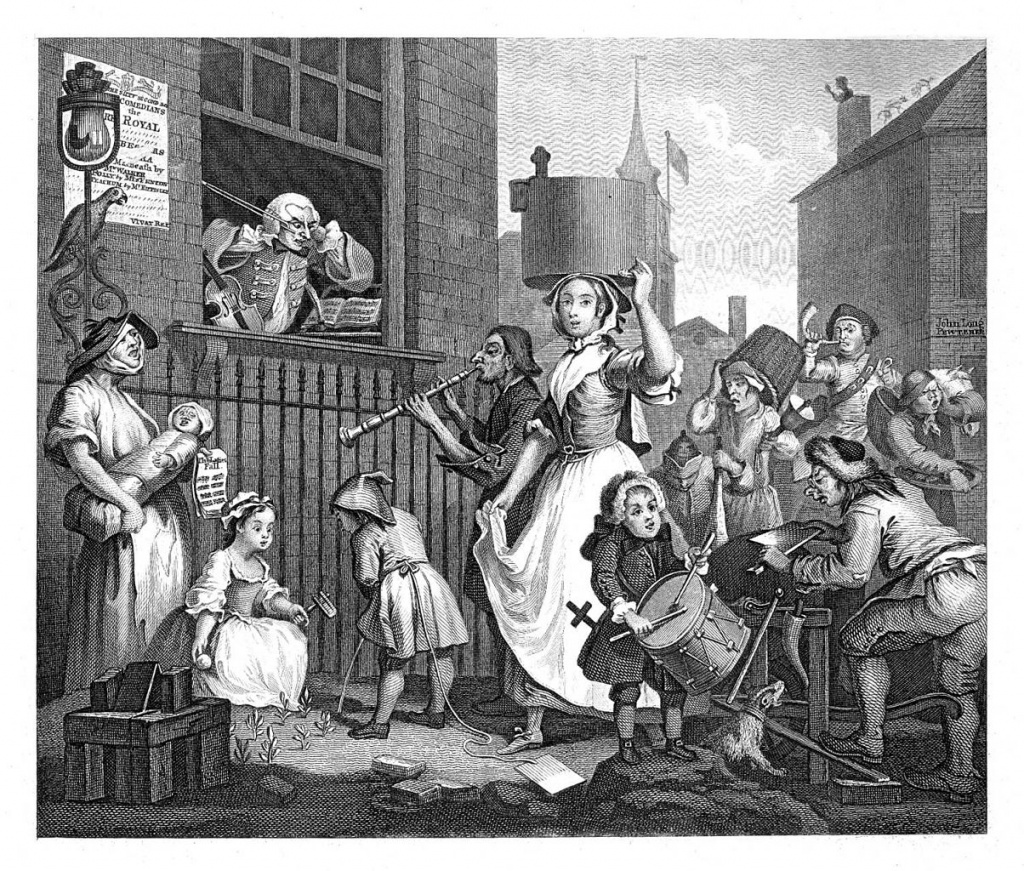Aural Architectures
- Precedent Field Method
 Image Credit: Hogarth’s Enraged Musician
Image Credit: Hogarth’s Enraged Musician
Aural Architecture is a term used by Dr. Barry Blesser, a former MIT professor and one of the founders of digital audio, his paper Digital Processing of Audio Signals was published in 1978 and he co-chaired the 1st International Conference on Digital Audio in 1980. Dr. Blesser has published widely on these topics, including a recent book written together with Linda-Ruth Salter entitled Spaces Speak, Are You Listening? (Blesser) and an essay in OASE entitled Aural Architecture: The Invisible Experience of Space (B. a.-R. Blesser), are two that stand out. These two writings describe the exploration of spatial awareness from the auditory perspective, the interaction between our auditory sense and the natural and built environment. Blesser states, “all sound exists in a space; there is no spaceless sound” and “Aural Architecture is concerned with the experience of sounds that have been changed by the physical properties of a space”. Since there is no “spaceless sound” (this refers to the cultural, mental and physical ideas of space and sound) then we can discern that Aural Architecture is in fact concerned with all sounds, in and so far as they are concerned with space. This certainly opens up the conversation, but it begs the question, are all sounds relevant to architecture? Or, which sounds are in fact relevant to which architecture? And to what end? To propose an end for this agenda and its reasons for being included in this research would be to ask, what sounds are needed to make a gratifying aural architecture, or reversely, what sounds should be masked or removed from aural architecture so that it may be good? What exactly is aural architecture and how does one understand, or design with these “sound changes” by “physical properties of space?” Blesser describes a way to understand aural architecture is to “compare it to visual architecture” although he goes on to say the terms won’t always work because the visual vocabulary is much more developed than our sonic one. This is due heavily to the visio-centric relationship that has been nurtured in our culture since modernity.
The Finish architect Juhani Pallasmaa discusses this at great length in his book The Eyes of the Skin: Architecture and the Senses (Pallasmaa), where he promotes a perspective that focus on architecture and senses other than vision, including touch and hearing. These ideologies are explored further in Pallasmaa’s writing including The Thinking Hand (Pallasmaa, The thinking hand), where Juhani further discusses the disconnection and detachment of the visual and the virtual and The Embodied Image (Pallasmaa, The Embodied Image), where Pallasmaa discusses the relationships to culture, language and the poetic and architectural image, all of which have a sensibility to that put forth in The Eyes of the Skin.
Bissera Pentcheva uses the term as well, as an Associate Professor at Stanford’s CCARMA, her interests lay at the intersection of acoustics and religious, sacred spaces and architectural psychoacoustics and runs a project called Icons of Sound, (Pentcheva) which deals with reverb time estimation, multi-sensory aesthetics and contextual psychoacoustics within the Hagia Sophia. These two examples along with other researchers from the disciplines of architecture, music, acoustics (amongst others) are coming to discover the transvergence of sound and architecture in a multitude of ways.
Links:
The Other Half of the Soundscape: Aural Architecture
Spaces speak, are you listening?
Icons of Sound



